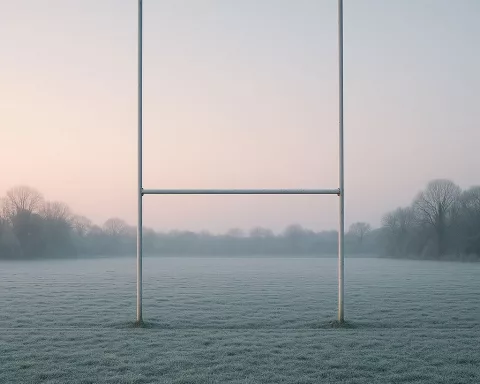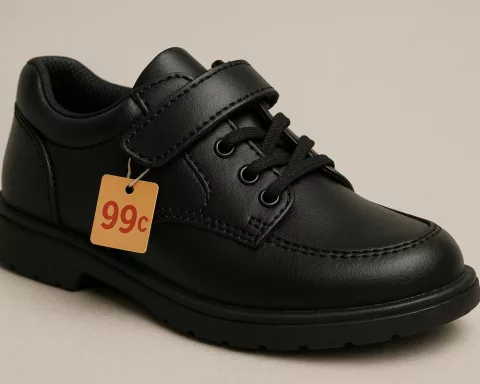A new era is dawning for South African rugby, with fans eagerly anticipating who will replace the legendary Handre Pollard as flyhalf. Promising talent Sanele Nohamba has emerged as a potential successor, with his impressive skills in kicking, playmaking and attack. While replacing a World Cup-winning flyhalf is a daunting task, the flyhalf position is crucial to the Springboks’ success in their next World Cup campaign, making the coming years an exciting time for South African rugby.
Who could replace Handre Pollard as South African rugby’s flyhalf?
Sanele Nohamba has emerged as a promising talent, showcasing his reliable kicking, playmaking prowess, and attacking impulses. His potential to be a future Springbok sensation has sparked conjecture about his ability to take over the coveted No.10 jersey from Handre Pollard. While replacing a World Cup-winning flyhalf like Pollard is no easy feat, the flyhalf position will be crucial to the Springboks’ success in their next World Cup campaign. The coming years indeed hold exciting prospects for South African rugby.
The Glorious Triumph of Handre Pollard
In the annals of South African rugby, the Springboks’ remarkable victory at the Rugby World Cup is etched in golden letters, an accomplishment largely attributable to the outstanding performances of Handre Pollard. Rising spectacularly from an injury replacement to the team’s helmsman, Pollard’s triumph is more than a personal accolade; it has sparked curiosity about his potential successors, especially with emerging talents like Sanele Nohamba on the horizon.
The flyhalf position in rugby is a critical role demanding a player with exceptional accuracy, strategic understanding, and the capability to manage tremendous pressure. Pollard’s rise to prominence showcases his tenacity, ambition, and prowess, particularly his capacity to command the game and deliver pivotal penalties under pressure. His path to success, initially marred by an injury that jeopardized his spot in the 2023 World Cup squad, is now a legendary chapter in the Springboks’ history.
The Promising Talents and Uncertainties
Manie Libbok, another bright talent, had an eventful 2023. He added an offensive flair to the Boks, showcasing his skills via his finesse in kicking and inclination to run the ball. Nonetheless, his inconsistency, notably against Ireland, has cast doubts on his dependability in high-stakes situations.
In this context of burgeoning talent, Sanele Nohamba has surfaced as a fascinating prospect. The transition from a scrumhalf to flyhalf for the Emirates Lions, prompted by injuries, has been nothing short of miraculous. His performances have garnered him widespread praise, with aficionados and coaches lauding his reliable kicking, playmaking prowess, and attacking impulses. These characteristics have sparked conjecture about his potential to be a future Springbok sensation.
While the 2023 World Cup victory is Pollard’s feather in the cap, the 2027 tournament unfolds a universe of opportunities. Pollard’s history of injuries and Libbok’s inconsistency have rendered the flyhalf position a bit precarious. Therefore, the focus is on Nohamba’s ongoing advancement and his consistently excellent performances for the Lions. These elements could possibly culminate in his emergence as a potent contender for the Springboks’ 2027 squad.
The Herculean Task of Replacing a Champion
Replacing a World Cup-winning flyhalf like Pollard, however, is no easy feat. In spite of Nohamba’s indisputable talent, he still has to prove his mettle at the international stage. His rapid ascent and comprehensive array of skills make him a formidable candidate for the future of South African rugby. Yet, the question lingers whether he can meet the expectations and vie with Pollard for the coveted No. 10 jersey.
Indeed, South African rugby’s flyhalf position has become an area of intense discussion following the 2023 World Cup, with several gifted players competing for the position. Among these, Sanele Nohamba stands apart, signifying a potential new era in the illustrious history of South African rugby. His growth will be captivating to observe in the forthcoming years as he seeks to emulate, or perhaps even surpass, the accomplishments of the extraordinarily talented Handre Pollard.
The stage is set for a thrilling competition with a promising talent like Nohamba eyeing the iconic No. 10 jersey. As the Springboks prepare for their next World Cup campaign, it’s clear that the flyhalf position will be a crucial determinant of their strategy and success. It remains to be seen if Nohamba can rise to the occasion and carve his own legacy in South African rugby. The coming years indeed hold exciting prospects.
1. Who is Handre Pollard and why is he significant in South African rugby history?
Handre Pollard is a legendary flyhalf player in South African rugby history. He played a crucial role in the Springboks’ 2019 Rugby World Cup victory and emerged as a personal accolade for his tenacity, ambition, and prowess.
2. Who are the potential candidates to replace Handre Pollard as South African rugby’s flyhalf?
Sanele Nohamba and Manie Libbok are among the emerging talents who could potentially replace Handre Pollard as South African rugby’s flyhalf.
3. What are the skills required for the flyhalf position in rugby?
The flyhalf position in rugby demands a player with exceptional accuracy, strategic understanding, and the capability to manage tremendous pressure.
4. What are the uncertainties surrounding the potential successors to Handre Pollard?
Manie Libbok’s inconsistency and Sanele Nohamba’s lack of international experience are the uncertainties surrounding the potential successors to Handre Pollard.
5. How important is the flyhalf position for the Springboks’ success in their next World Cup campaign?
The flyhalf position is crucial to the Springboks’ success in their next World Cup campaign, as it is a key determinant of their strategy and success.
6. Can Sanele Nohamba meet the expectations and vie with Handre Pollard for the coveted No. 10 jersey?
Sanele Nohamba still has to prove his mettle at the international stage, but his rapid ascent and comprehensive array of skills make him a formidable candidate for the future of South African rugby. It remains to be seen if he can meet the expectations and vie with Handre Pollard for the coveted No. 10 jersey.












